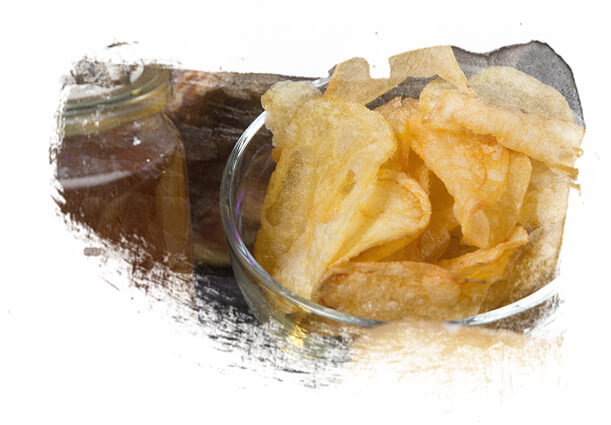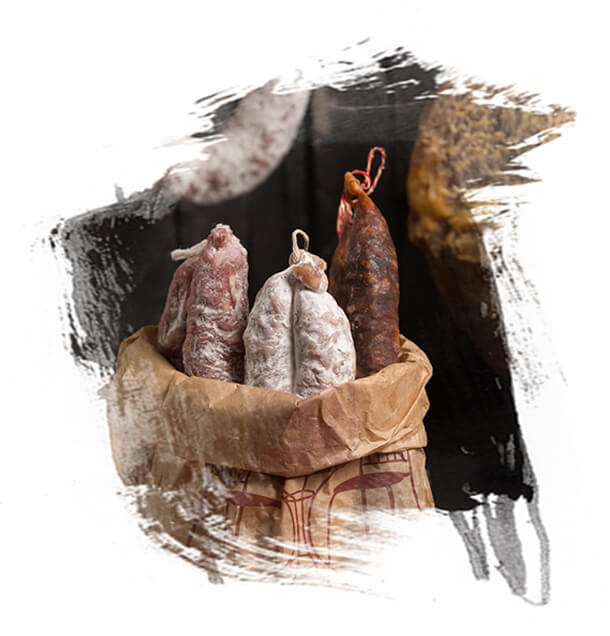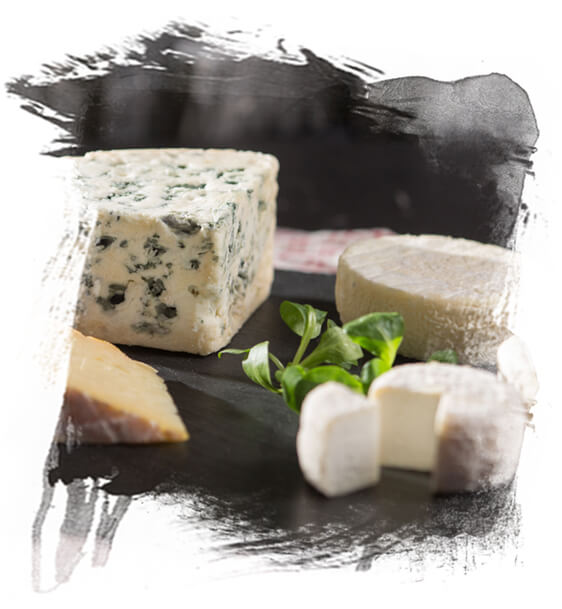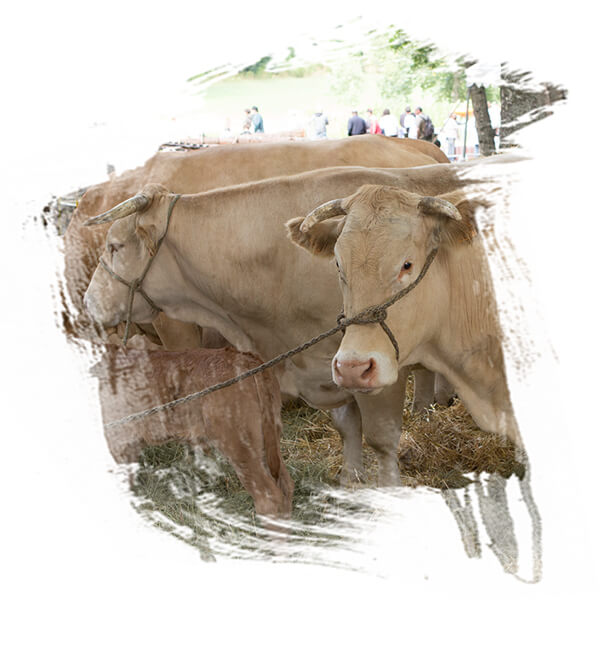A terroir, a know-how : an ideal combination to offer quality and seasonal products… some of which are recognized by labels.
Our « crisp-crisp »Potatoes chips from Barre make a particular “crisp-crisp” when you eat them ! These potato chips have the local flavour. It is a familial business. Thousands of people have already tasted them, so do not hesitate…you will find them in the food trades of the ” Monts de Lacaune”… LEBON Patrick 05 63 37 41 09 |
 |
 |
Our slate of “Charcuterie and Salaisons”In our Haut Languedoc mountains a gourmet skill has spread for centuries, born from the men’s talent and from a “terroir” : the “salaisons” (dry pork meat). Each generation transmitted their secrets : a good pig, a skill, the art of salt and pepper… and a drying with the wind. Here, the “charcuterie” has not one but many peculiarities : fresh, cooked (such as fricandeaux, jambonneaux, boudins, bougnettes, melsats, fritons, pâtés…), and dried meat products (salaisons). The Ham of Lacaune ®, with its hazelnut taste, is the highest expression of excellent taste and shares its success with the “saucisse” and “saucisson”. Since 1969, Lacaune enterprises got engaged into an official quality approach and obtained a “Label Rouge” on “salaisons” (cured meat : dry ham, saucisson and saucisse). This involvement is a guarantee for the high quality of their products. Salaisons de Lacaune INDICATION GÉOGRAPHIQUE PROTÉGÉE (French label) In 2015,the “Jambon (ham) de Lacaune, Saucisses and Saucissons de Lacaune” obtained IGP -An attestation of origin : a mountain territory at 800m of altitude with a mountainous climate with oceanic and mediterranean influences good for the drying process. |
Our cheesesThe green meadows are the favourite area for the Brebis Lacaune (breed). Its milk is used to process the well known French cheese Roquefort. Goats and cows also roam our meadows to provide us with typical cheese. Goat cheese : Fresh or lightly ripened, our tiny goat’s cheese will know how to stay soft and mellow. You can also find them ashed in the manner of a Valençay of in matured tomme. Ewe cheese : Creamy in the form of a “pérail” or in tomme, accompanied by a black fruit jam, our sheep’s cheeses are full of fine and floral flavors. Cow sheese : The famous Tomme de Lacaune is known for its softness and finesse appreciated especially by children. A refined version is also to be discovered with much more pronounced dried fruit aromas. Roquefort : The Lacaune breed results from the selection of the best ewes of different local breeds once present in the Roquefort area. It is therefore perfectly adapted to the climatic conditions and environment of the area. With a higher milk yield and improved rustic qualities, the breed now reigns alone in the milk collection area. Before it leaves the dairy or when it enters the cellar, the Roquefort “bread” is pierced with about forty holes over its entire height. The purpose of this |
 |
 |
Our barbecuesLamb : born from a common work between the Agno’interpro (Interprofessional Association for the Promotion of Roquefort Basin Lambs) and the patrimony foundation, the lamb “du patrimoine”comes from the ewe Lacaune breed. It is the first lamb of the year. It supports the pastoral heritage since 1€ /lamb is given to the patrimony fondation. Beef and veal meat : Thanks to its natural characteristics adapted to the region (easy breeding, hardiness, light carcass with high yield), the Limousin breed has spread widely and today represents the first breed in terms of numbers (about 75%). It cohabits with the blonde Aquitaine breed, and more marginally with the Charolais and Aubrac breeds. Cows graze about 6 months. In winter, they are sheltered and are fed with fodder and cereals (barley, wheat…) from the farm fields. This gives the meat its specific taste. Poultry : The altitude and the climate of our middle mountain is very good for poultry. Hens, turkeys, ducks… are mostly outdoors and with a cereal-based diet. They offer a tender and a tasty meat. Several products to taste : rillettes, fritons, foie gras etc… |
